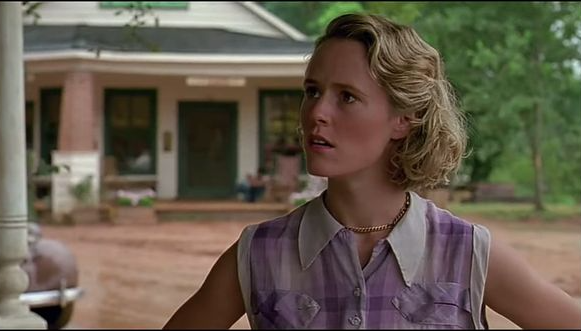In Fried Green Tomatoes, where every glance and gesture seems to carry emotional weight, the image of the bridge emerges as a powerful and often overlooked symbol. Though it appears only briefly, the bridge becomes a central motif of loss, passage, and the divide between life and death, innocence and trauma, past and present.
Let’s take a closer look at how this singular location transcends its physicality to embody the deepest emotional currents in the film.
The Tragic Death of Buddy Threadgoode
The first — and perhaps most iconic — appearance of the bridge comes early in the flashbacks, when young Buddy Threadgoode (Idgie’s beloved brother) is struck by a train while helping a girl retrieve her hat. It is a scene drenched in sunlight and Southern summer stillness…until everything changes in an instant.
The bridge is:
-
A place of play: Buddy is laughing, flirtatious, carefree.
-
A site of tragedy: His death is sudden, cruel, and marks the end of innocence — especially for Idgie.
For Idgie, the bridge becomes a frozen moment in time. It’s where she lost the person who grounded her. The trauma catalyzes her transformation into the wild, untamed woman we come to know: someone allergic to vulnerability, allergic to loss.

Memory and Grief: Revisiting the Past
Throughout the film, the camera returns to similar natural settings — railroad tracks, rivers, and pathways near the bridge — evoking Buddy’s death without always saying it aloud. This subtle repetition turns the bridge into a mental landmark, a place Idgie revisits not physically but psychologically.
It becomes:
-
A marker of grief unspoken.
-
A symbol of the split between who she was and who she became.
-
A border between childhood fantasy and adult reality.
We never see Idgie cry over Buddy. That’s the point. The bridge absorbs her sorrow — it becomes the stand-in for emotions too big to express.
Bridges Across Time: Ninny and Evelyn
In the modern timeline, Ninny’s storytelling becomes a figurative bridge. She uses narrative to carry Evelyn — and the audience — across decades. In doing so, she connects two women from entirely different backgrounds and generations.
The act of telling a story — with all its nonlinear wanderings and emotional weight — is itself a crossing. One life touches another. The past enters the present.
Even the film’s structure mirrors this: constantly shifting between timelines, as if trying to reconcile the distance between then and now, youth and old age, pain and healing.
The Bridge as a Threshold
More than anything, the bridge represents a threshold. In literary and mythological traditions, bridges often signal the boundary between worlds:
-
Life and death
-
Safety and danger
-
The known and the unknown
In Fried Green Tomatoes, crossing the bridge is never just a walk — it is a transformation.
-
Buddy crosses and never returns.
-
Idgie, though she avoids it, carries it within her.
-
Evelyn, by metaphorically crossing the emotional bridges Ninny offers, becomes someone new.
What Bridges Do We Carry?
Few films use physical space as emotionally and symbolically as Fried Green Tomatoes. The bridge is barely named. It’s not discussed, explained, or mourned directly. And yet, it lingers — in memory, in behavior, in the shape of grief.
It teaches us something essential: that trauma often hides not in grand gestures, but in quiet, unassuming places — a wooden beam, a stretch of rail, the sound of a train whistle in the distance.
And just as the characters must learn to live with what was lost on that bridge, so too must we learn to cross our own.
